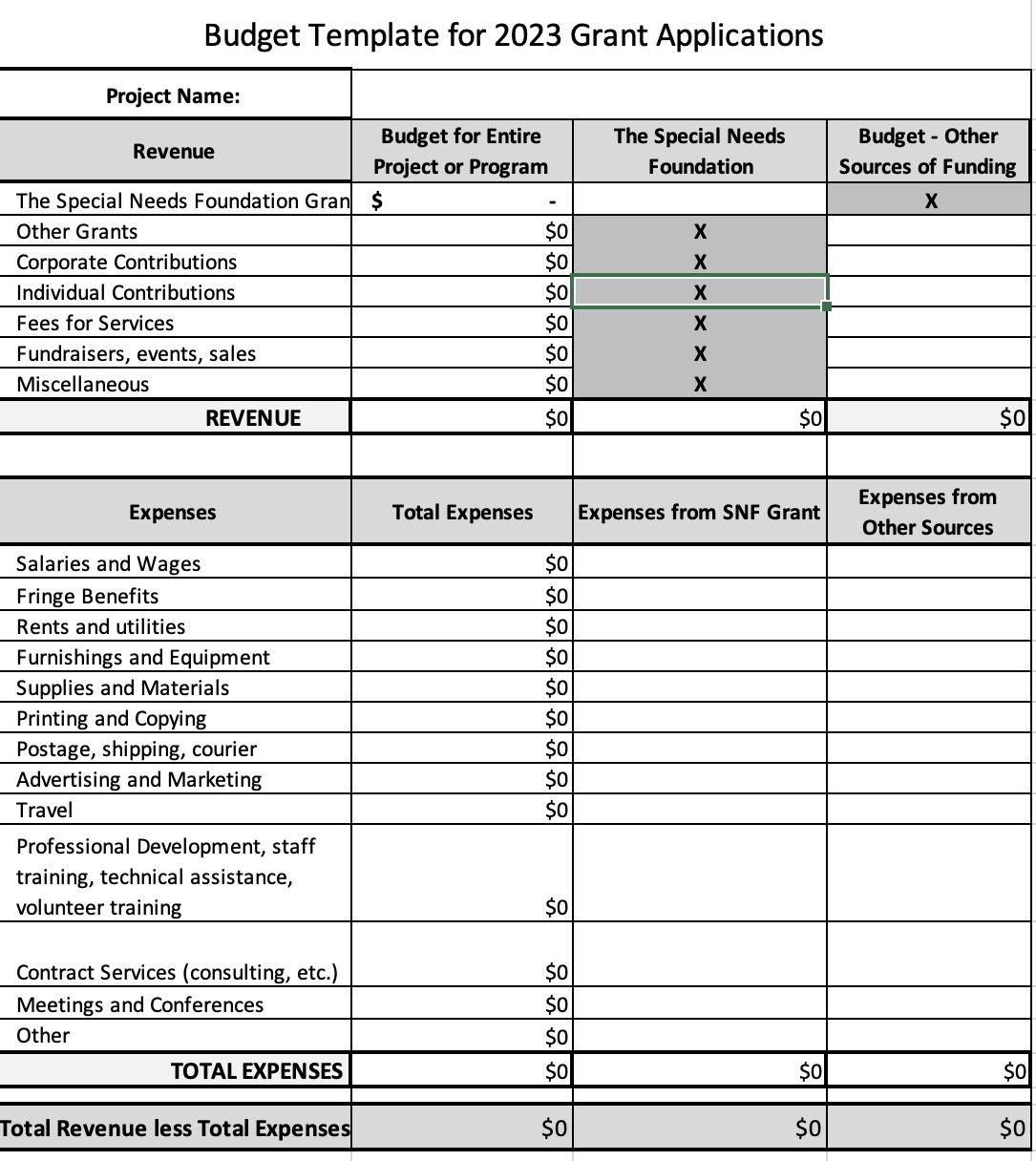Question
Using the cost items identified and described in Exhibit 1, prepare a budget that Jennifer will include in the grant proposal using the format provided


Using the cost items identified and described in Exhibit 1, prepare a budget that Jennifer
will include in the grant proposal using the format provided in Exhibit 2.
The case study introduces the challenges and unique accounting needs of
nonprofit organizations, particularly in budget preparation and the grant proposal process.
The case is designed for courses that focus on not-for-profit accounting or managerial
accounting. As students are becoming more interested in social responsibility, this case
provides an opportunity for students to develop a deeper understanding of budgeting
concepts by introducing a nonprofit perspective into the budgeting material traditionally
covered in a managerial accounting course. Students learn about differences in
budgeting for a nonprofit organization compared to a business that operates for profit
including sources of revenue, mission-driven focus, receipt of in-kind donations,
unbalanced budgets, the role of the board, and data availability. Students are required
to use problem-solving skills and external resources to estimate amounts to create a
budget for a nonprofit organization in a scenario where information is incomplete, much
like a real-world situation.
THE CASE
While waiting for a bus into downtown Tucson, Jennifer could not stop thinking about the nonprofit organization she had visited earlier in the week. She thought about how
involved she had been in her small community back home, and how this involvement
had faded with her recent move to pursue her dreams of becoming a teacher. Jennifer had a
passion for children with special needs and wanted to make a difference in their lives. During
college, Jennifer had volunteered at the Brighton Center in San Antonio, TX, and she wanted to
develop a similar nonprofit organization to help families in her new community.
Background Information
The Brighton Center was founded in 1966, and in 1969 the nonprofit began as a part of the Up
With Downs organization as a school for children with Down Syndrome.1 Now with close to 50
years as part of the San Antonio community and a staff of almost 800, the Brighton Center has
helped the development of thousands of local children while maintaining the core values of passion with purpose, striving for greatness, honoring relationships, and serving with integrity.
Jennifer was excited to start a nonprofit organization similar to the Brighton Center where she
could truly make a difference, and she wanted to get started as soon as possible. After a few
weeks of brainstorming, Jennifer decided to name her nonprofit organization the Developing
Bridges Center (DBC). She was in the process of developing a grant proposal, and then the next
step was to secure the necessary funding. She had drafted the proposal narrative, but she felt
overwhelmed at the idea of developing a budget for the organization until she thought back to her university course work. She immediately thought about the managerial accounting class she had taken and her partner for the class project, Steven Johnson. He had been a good partner to work with and she recalled that he was planning to pursue a career in accounting. She smiled as she searched for his name on the websites of accounting firms in the area, and remembered that
instructors had told them that someday, classmates might become associates in the business
world. She got excited when she thought to herself, ''Here I am calling my classmate to work with me in the real world. Let's hope my professors were right. Who would have ever guessed I would be putting together a real project to help real people?'
The Consultant, Steven Johnson
''Steven, you have a call on line one. Jennifer says that she knows you from college,'' the
familiar voice coming through the phone system interrupted Steven's thoughts as he was
reviewing work on an important consulting engagement. After speaking with Jennifer, he was
excited about the opportunity to have an impact on the lives of some very special people. This
time, the budgeting project they would develop would be evaluated by funders with real money,
ready to support a worthy cause. Steven knew a realistic budget would be required to gain the
necessary funding.
After the brief conversation, Jennifer was relieved at the positive response she received from
Steven. He seemed genuinely interested in her organization and was willing to help her develop
the budget needed for the grant proposal. Jennifer forwarded a copy of the grant proposal narrative to Steven so he could begin working on the budget. She let out a sigh of relief knowing that the grant proposal would be more complete with Steven's help.
The Grant Proposal Process
Unlike for-profit entities that sell products or services and operate with the intent to generate
profits, the purpose of a nonprofit entity is to serve the public or fulfill a specific mission. Since the focus of nonprofit organizations is on spending money necessary to fulfill a mission rather than selling a product or service, these entities must be resourceful in securing funding. Revenues of nonprofit organizations come from a variety of sources. First, individuals may make donations to support nonprofit organizations that have a mission for which the individual is passionate or perhaps simply sparks their interest. Individual support is often a result of fundraising events. A second source of revenue for nonprofit organizations is corporations. Donations from corporations are frequently corporate sponsorships providing community awareness of the corporation's support to the nonprofit organization. Nonprofit organizations can earn revenue through charges in exchange for a service or product. Finally, foundations and governments provide money to nonprofit organizations through grants.
To secure funding through a grant, a review and approval process is required. The grant
proposal must include a narrative that describes the program or purpose for which the funds will be used. It must also include a budget that is a financial representation of the narrative. The budget outlines the proposed program in fiscal terms and communicates to the funders how the programs will be conducted. The budget must be complete and address all aspects of spending so that the funder has confidence that the grant proposal will meet the goals of the nonprofit organization. The budget is also useful for analyzing the actual results compared to projections. It is, therefore, a monitoring tool to assess the outcomes related to the grant proposal.
Developing Bridges Center Grant Proposal Narrative
Developing Bridges Center aims to enhance the quality of life of children with special needs or
developmental delays, as well as the lives of their caretakers. Many families learn how to take care of their children through trial and error. Developing Bridges Center believes that training parents with the essential tools allows them to understand and address their child's developmental delays or disabilities so that the child can reach his or her full potential. Developing Bridges Center also acknowledges the fact that many families are unprepared for what happens after their child ages out of special needs programs, and it strives to be the gateway that gives families information on ways to prepare for the time when their child transitions into adult-based care programs.
The goal of the Developing Bridges program is to reach up to 200 families with special needs children. Developing Bridges has an initial fundraising goal of $240,000. The Developing Bridges Center already has the support of the community through projected corporate support in the amount of $40,000, and anticipates individual donations of approximately $10,000, and support from the United Way of $5,000. Jennifer has identified a foundation that is seeking proposals for funding nonprofit organizations to improve the health and welfare of families in her local community, and she is also planning to apply for federal grants. This grant proposal is for $100,000 to help fund Developing Bridges Center, which is broken down into two components, described below.
First, the early childhood development resources component is an eight-week training
seminar for parents that focuses on educating parents about early childhood development, special education laws, and how to become their child's best advocate. The weekly training sessions will be one-and-a-half hours long. In order to ensure that parents are able to be attentive, child care services will be provided that can accommodate the various needs of the children whose parents attend. Each family will receive a handbook that outlines the lessons of the course, as well as additional resources the caregiver might need. The handbooks will also include weekly homework tasks that monitor the progress of the parent and child. Each session will have an overarching theme, in which participants receive a small goodie bag that has additional resources for the family to use at home.
The second component provides resources for children who are aging out of special needs
programs. This program consists of 12 monthly workshops beginning with content centered on
ways families can prepare to transition into adult-based programs, including how to pick the
organization best suited for their child. The latter workshops will bring in outside organizations to present the services they provide. As an incentive, families that participate in all 12 workshops will be given a reduced family package to a local theme park that serves children with special needs. All workshops are offered monthly so that families can begin the seminars at their convenience.
Program Services
In order to fulfill the goals of the organization to enable children to reach their full potential and
provide education and support for families, the organization will hire a program director (estimated cost $38,000), two teachers ($25,000 each), and two assistants ($15,000 each). Guest speakers will provide expert instruction at various workshops. The organization anticipates offering $100 honorariums to five guest speakers monthly.
Teaching materials, worksheets, and printed brochures will be distributed to families that
attend the workshops. The estimated cost of materials per family is $10. The materials will also be made available on the website to registered participants. In addition, each family will receive a completion certificate ($1.50 each).
Support Services
A corporate sponsor has agreed to provide facilities that are sufficient to serve the current
needs for 200 families. However, the facilities will require a ramp and slight modifications to meet guidelines for the Americans with Disabilities Act of 1990 (ADA). Furnishings to meet the needs of the organization are estimated to cost approximately $8,100.
Fundraising activities are anticipated to raise awareness of the organization and generate
funding to support ongoing program services. The entity secured approval as a tax-exempt
501c(3) nonprofit organization in 2017. As such, Developing Bridges Center anticipates strong
support from the community as the organization works to meet the needs of very special families to enhance the quality of life of children with special needs or developmental delays, as well as the lives of their families.
Exhibit 1 Identify Cost Behavior and Estimate Annual Budget Amounts Developing Bridges Center Grant Proposal Description of the Project: Developing Bridges Center provides education and support servies to children with disabilities or learning differences and to their families. The goal of the organization is to enable the children to realize their full potential and to achieve their highest capability. Amount of funds requested Number of clients to be served Program expenses: Program Director Teachers Assistants Guest Speakers $100,000 200 families Type of Variable Estimated Cost Estimated Cost per Monthly (Variable or Annual Cost Client Cost Fixed) Fixed Fixed Fixed Variable $38,000 $25,000 $15,000 $100 Indirect costs: Teaching materials Variable $10 $2,000 Completion certificates Variable $1.50 $300 24,000 $3,600 Support services Facility Modifications Fixed $8,100
Step by Step Solution
There are 3 Steps involved in it
Step: 1

Get Instant Access to Expert-Tailored Solutions
See step-by-step solutions with expert insights and AI powered tools for academic success
Step: 2

Step: 3

Ace Your Homework with AI
Get the answers you need in no time with our AI-driven, step-by-step assistance
Get Started


